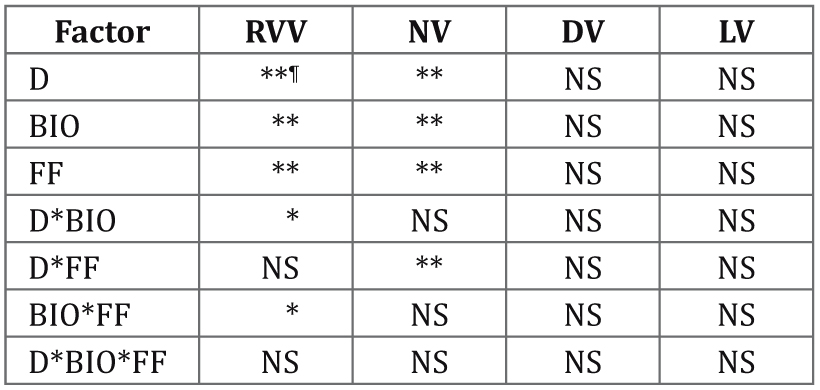Production and nutrimental quality of cowpea pods, Vigna unguiculata (L.) Walp, as function of topological arrangement and fertilization type
Keywords:
Vigna unguiculata, biofertilization, maize trellis, foliar fertilizationAbstract
Cowpea (FC) is usedin human feeding, and is cultivated on maize living trellis; however, few studies about suitable topological arrangements are available. Plant nutrition in this system could be completed by biofertilization (BIO) and foliar fertilization (FF). In Huitzuco, Guerrero. Mexico, during the rainy season FC guide type was sowing on trellis maize at 80(D8) and 160 cm (D16) of distance between rows (D), with and without BIO (B and SB), and with and without FF(F and SF), in order to determine the effect of D, BIO and FF on yield and nutritional quality of pods. Emergency of FC occurred at 6 days after sowing (dds); flowering at 58 dds; the first pod cut at 70 dds and the last at 110 dds. The higher pod yield was achieved with D8-B-F (851 g m-2), followed by D8-SB-F (758 g m-2) and D16-B-F (657 g m-2). This last treatment also generated the highest concentration of minerals (6.5%) and proteins (28.1%), but less carbohydrates and fiber. The highest yield and quality of green pod was obtained with D8-B-F.
Downloads

Downloads
Published
How to Cite
Issue
Section
License
Aquellos autores/as que tengan publicaciones con esta revista, aceptan las Políticas Editoriales.










.jpg)




